
What every mystery book club needs is a mystery knitalong! So of course our Summer of Mystery club features an MKAL!
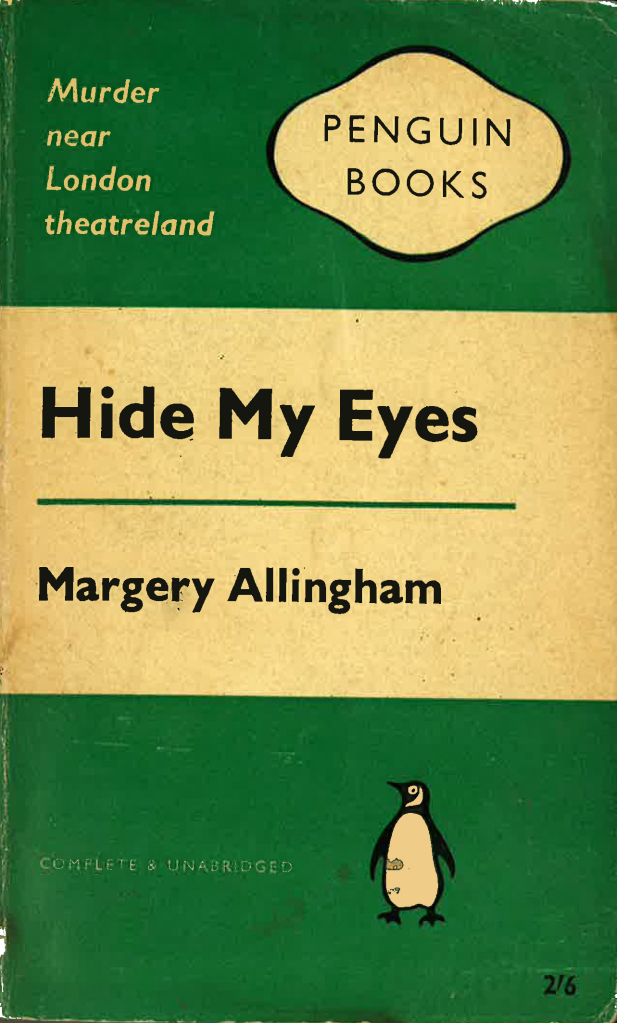
Our mysterious knit is a shawl (or wrap), and I’ve based its four clues around the plot and action of Hide My Eyes (1958) (US title: Tether’s End) one of the last novels that Margery Allingham produced, but among the first of her books that I read many years ago. I was bowled over when I first encountered this book, and it definitely ranks among my favourite titles on our club reading list. There’s just something about the ineluctable movement of the plot (which you, the reader, can do absolutely nothing to arrest), Allingham’s vividly drawn personalities, and the book’s equally vivid sense of place, that make it completely gripping and un-put-down-able.

The world of Hide My Eyes is that of 1950s London.

A world of dark rain-slicked streets and bright lights in the smog.

Of old restaurants, and variety acts . . .
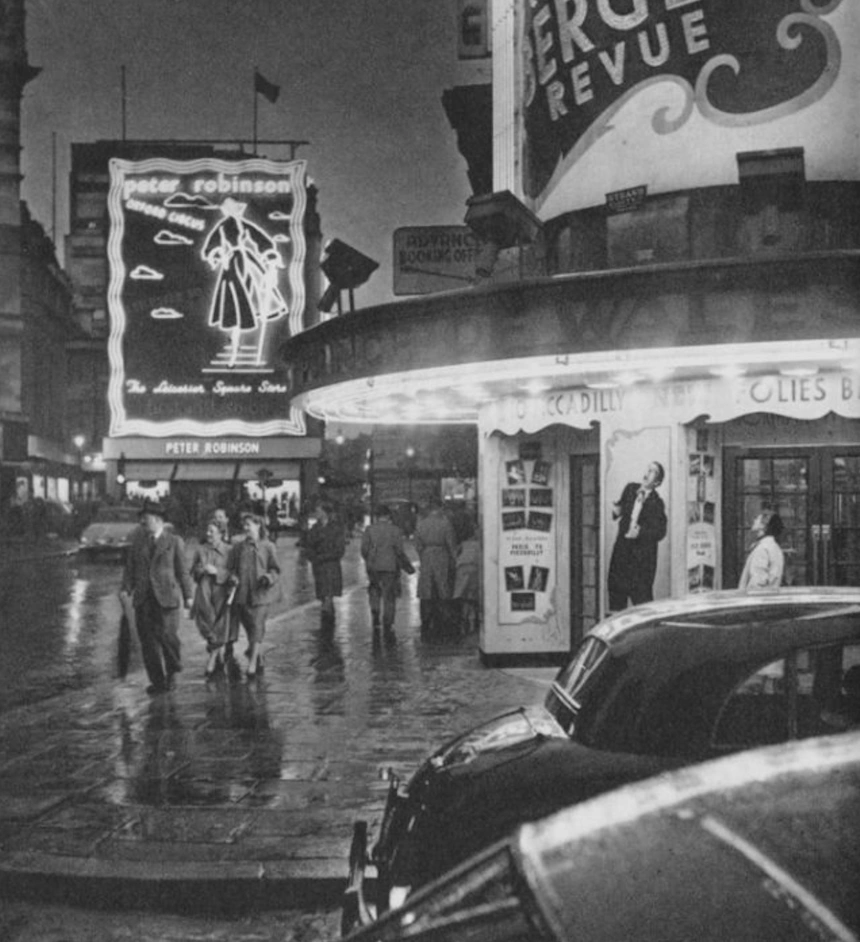
. . . and a new consumer culture . . .

A world where the everyday figures of labouring people might move unnoticed through the city streets . . . .
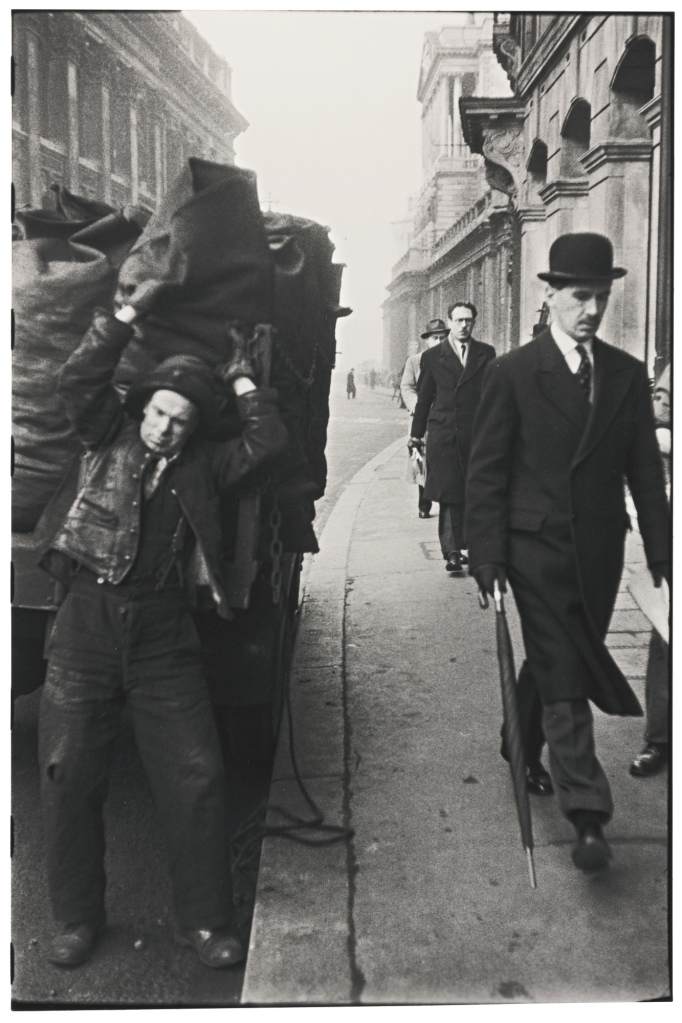
. . . and where moral innocence and darkness meet.
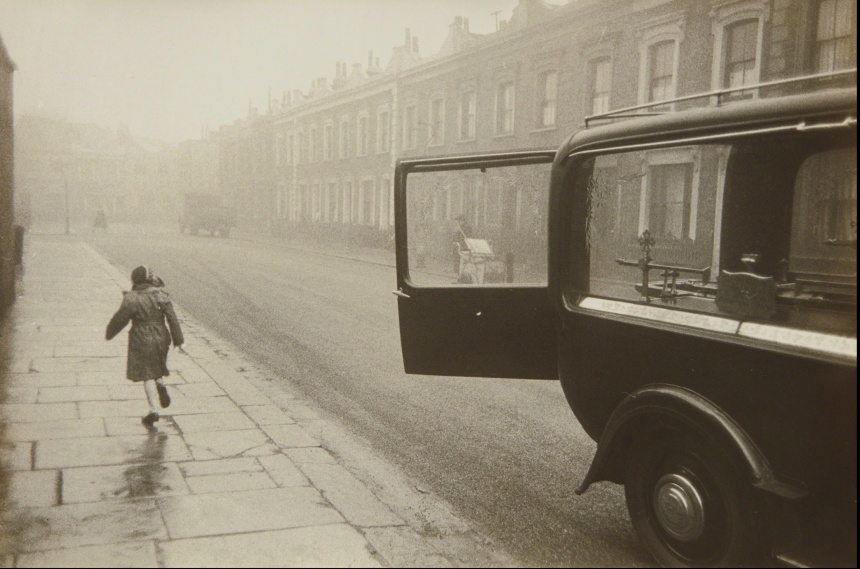
A world of decaying genteel neighbourhoods, and new urban environments . . .

. . . of 24 extraordinary hours in the life of the novel’s characters, while the everyday life of the vital city just carries on around them.
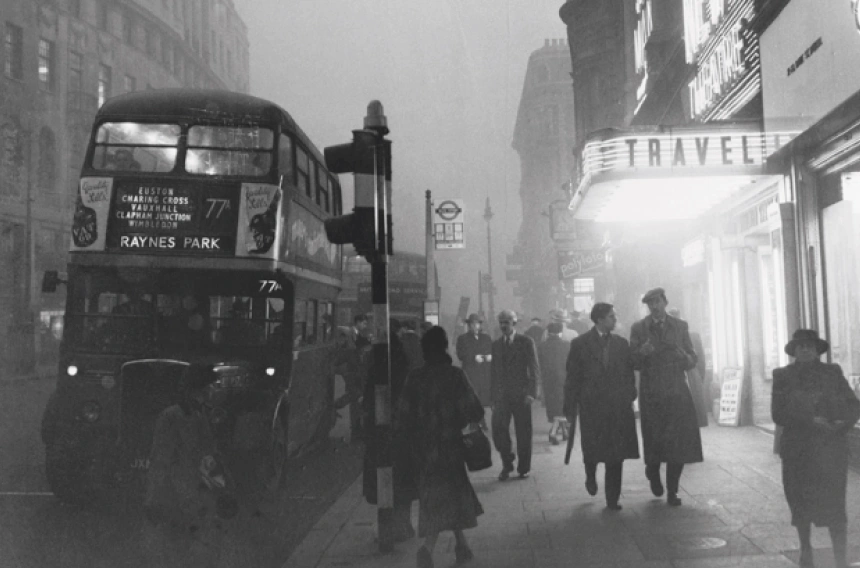
And of buses.
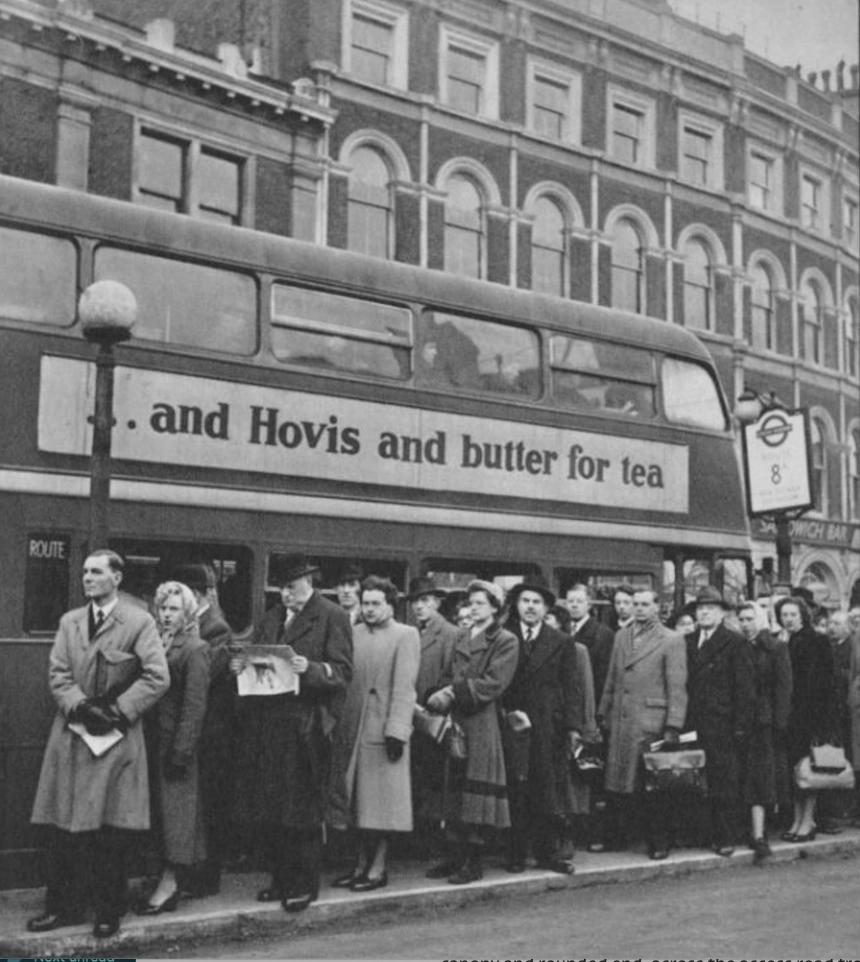
. . . perhaps most of all, of buses.

The cat-and-mouse action of Hide My Eyes criss-crosses London, from west to east, from Bayswater / Paddington, through Soho and the West End theatre district, and then East (by bus), to the Regent’s canal basin and the dockside. I’ve named the MKAL after the crime with which Hide My Eyes begins: The Goff Place Mystery (a place, which like many of the novel’s locations, is loosely fictionalised)

Each of our MKAL clues is associated with one of the novel’s characters, and might also be regarded as a stage (or stop) on our West-East cross-London bus journey.
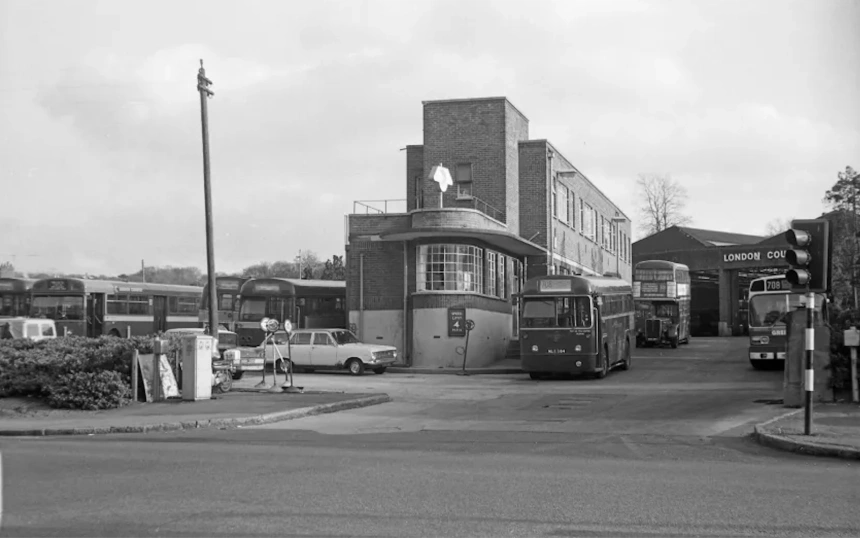
Just like the novel, the mystery knit involves twists and turns, and changes of direction. Some of the clues feel more “traditional” (much like their associated characters) while others have a more modern (or modernist) aesthetic.

Unlike the action of the novel (which mostly takes place in a single day) our MKAL has a much more leisurely pace, unfolding over four months, allowing time and space for knitters of all abilities (and speeds). Do join us, and enjoy a journey across 1950s London, through the words of Allingham’s brilliant late novel, and the stitches on your needles!

But what about the yarn? How should I prepare for the MKAL?

Those of you who have signed up for the club have already been asking a lot of questions about the yarn, swatching and preparation for the MKAL, so I thought I’d include some of that information here.

The MKAL design uses 5 shades of fingering weight yarn: as a ballpark, you’ll need 100g or less of each shade (more precise and detailed yarn quantities for each shade are included in your welcome pack).
I worked with three test knitters on this design, each of whom selected her own 5 shade palette, using the following basic parameters:

Shade A: A dark shade
Shade B: A light shade
Shades C and D: two shades of medium value (that is, not too dark or too light) that also contrast well with one another.
Shade E: A pop shade (that is, a shade that stands out in your palette because it is lighter or brighter)

The palettes Claire, Maylin and Dawn developed through swatching are each very different . . .
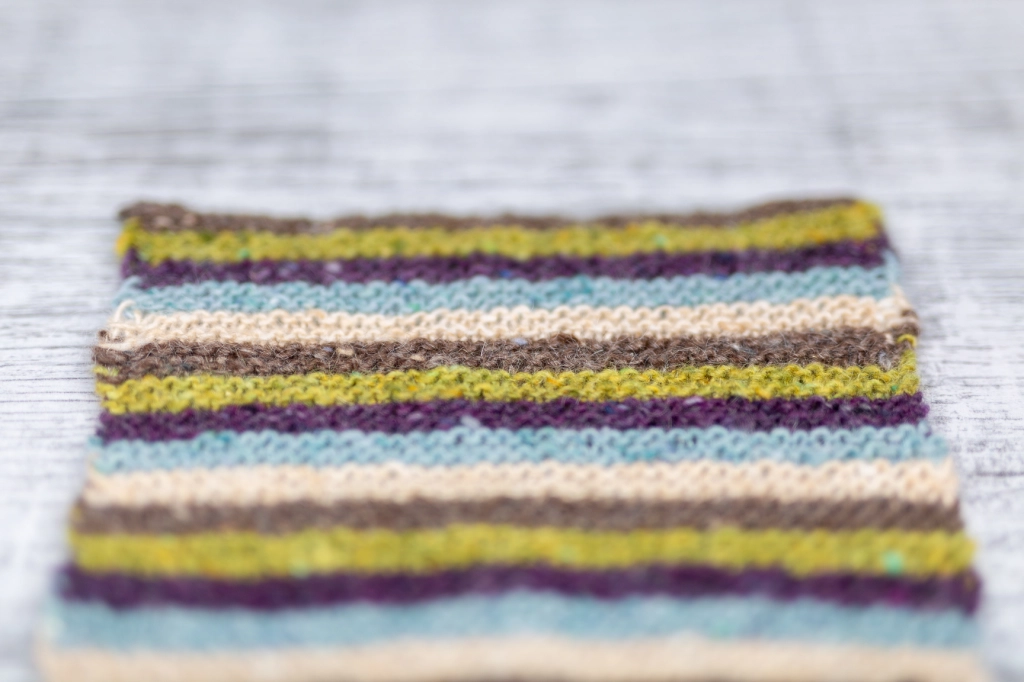
. . . but, following our basic parameters, each works equally well for this design!

So if you would like to join Claire, Maylin and Dawn, and get ahead developing your palette for the Goff Place Mystery MKAL: after you sign up , you’ll receive a welcome pack (to download) which includes detailed swatching instructions and information about yarn quantities.

Once sign ups are closed, we will put some Milarrochy Tweed MKAL yarn packs, in a wide range of different palettes on sale in the KDD shop: you can then use your club discount to purchase yarn from us, or (of course) you can simply use yarn from your own stash, in five shades of fingering weight yarn that knit to gauge.
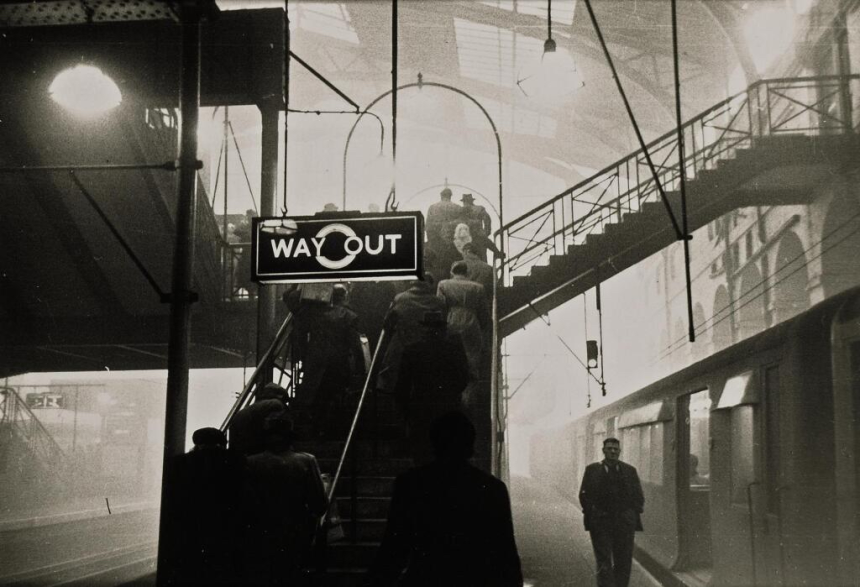
Claire has already set up a dedicated Goff Place Mystery thread on Ravelry: feel free to seek advice, share your palettes, or ask any questions there.
So will you join us for the Goff Place Mystery MKAL?
(Club sign ups close April 21st)
(The Robert Frank images – which for me powerfully evoke the world of Allingham’s Hide my Eyes – are available in his London / Wales (1951-3) collection, the project which Frank completed before his era-defining work of documentary photography, The Americans (1958)

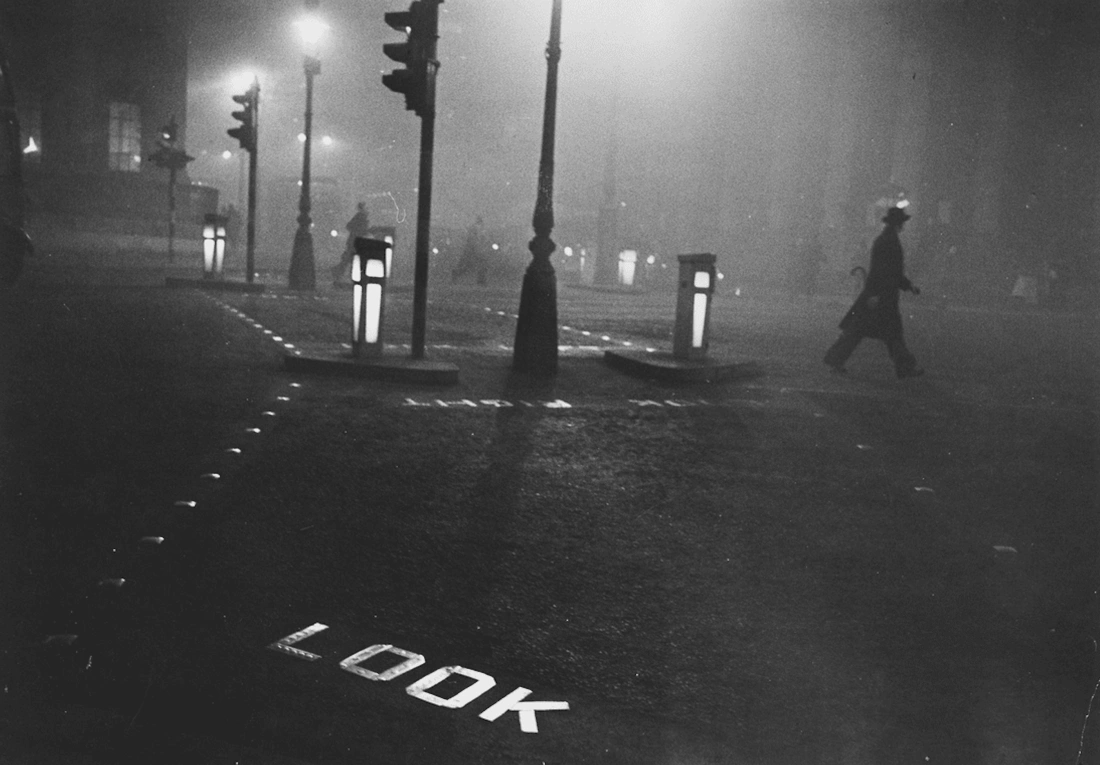
Could you let us know how much the MKAL kits will be?
LikeLike
I was already super excited about this club and it just keeps getting better. My grandad was a London bus driver and getting on his bus with Uncle George (not a real uncle), his conductor, giving out his tickets from that wee machine around his waist made travelling by bus special for my brother and I. Can’t wait to get started, my Kindle is filling up with the titles in preparation.
LikeLiked by 1 person
This post gave me an unexpectedly powerful jolt of nostalgia. I lived in London as a small child in the 1960s (my dad was in the US Navy and stationed there) and your photos brought back such memories.
LikeLiked by 1 person
would you be able to show us which shades are A, B, C, D, and E in these swatches?
LikeLike
They are in the order listed in the captions
LikeLike
I love your selection of photographs – such great choices for your quotes!
LikeLiked by 1 person
Oh those pictures! I was in London in the 60’s in midwifery school and coming from the states had all white underwear and was amazed to see other pupils had black or red (very um sexy) until I realized Why!! My whites were soon a darker shade of grey LOL Still had lots of /smog at that time.
LikeLiked by 1 person
Like you, Kate, I love mysteries, and in my case, thrillers, too. I joined the club because I had forgotten about Margery Allingham, and I look forward to revisiting her work.
Your collection of Frank photos remind me of the opening shots of the wonderful miniseries with Alec Guinness: Tinker,Tailor, Soldier, Spy. We look down on a barely busy Cambridge Circus with simply a couple of buses and a car or two.
Thanks for this superb opportunity.
LikeLiked by 2 people
Yes! And there are more tinker / tailor links – both in the shooting locations of that series and the fact that Le Carre was a great Allingham fan
LikeLike
The Robert Frank work deserves its own post!
LikeLike
I was born in 1951 and remember thick fogs (even in Cheshire) and waiting with my mother for buses to come looming out of the mist in the freezing cold. I also remember the coal fires which we used to huddle around and get mottley marks on our legs from sitting too close. We certainly needed our woolly jumpers then.
I have all the books and am now waiting for the fun to begin!
LikeLiked by 2 people
I spent my childhood in the 50’s and 60’s just over the border in Lancashire, and I can remember those ‘smogs’ very well. The last bad one I can recall was when I was a teenager and couldn’t get to work in Manchester as the buses had stopped running. And yes, those ‘corned beef legs’ we were warned about!
LikeLike
born in 1950 in Central London this brings back memories. In particular the smogs and being sent home at lunch time from school and having to follow the wall home so as not to get lost. I’m sure there’s a tram in one picture my mum always told me I’d been taken on one of the last trams through the kingsway tunnel but can’t remember. Horse drawn delivery wagons near St pancreas Station.
also when we moved a bit further out not far from Parliament Hill coal men and dustman carrying their loads on shoulders. It’s a different world now with the slums gone and at least the washing comes back in clean. Not covered in smoke and tar from the bitumen covered wood cobbles that were been dug up and sold off cheap for fuel (they burnt well) once smokeless fuel was made compulsory the smogs disappeared we just can’t see the pollution today
LikeLiked by 1 person
I just came back to look at the photographs again. They’re so mysterious and atmospheric!
LikeLiked by 1 person
I’ve never yet read any Margery Allingham, and I’m looking forward to meeting her! Also looking forward to the knitting, of course. I’ve ordered the books and plan to spend this afternoon playing around with colors.
LikeLiked by 2 people
I’m so looking forward to the MKAL and to the reading list!
LikeLiked by 2 people
Email us at hekp@katedaviesdesigns.com if you’ve not received your reading list
LikeLike
I am a club member. Would it be possible to have a list of the books we will read? I live in the US and finding the books in time to read them, may be somewhat difficult. Thank you. Brenda
LikeLiked by 1 person
When you signed up you will have received a welcome pack, including the full reading list and club timetable. If you can’t find this, check your spam folder – if it’s still not there, email Maylin: help@katedaviesdesigns.com
LikeLike
I live in the USA and just ordered all of them used from Abebooks.com.
LikeLiked by 2 people
Amazon and Ebay seem to have a good selection of her books. Good luck!
LikeLike